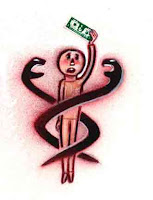Learning to fly an airplane
First flight:
November 5, 2009
Obtained PPL:
July 10, 2010
Total Duration:
8 months
Flying hours:
70.7 total
Learning to fly. What an amazing adventure.
I have to admit, I originally thought it would just be a fun little hobby, but rest assured, it takes a good bit of time, money, and determination.
My initial estimate was to complete my training in 5 months, finishing in March. This was extended due to two major holidays and a nasty flu bug near the end.
A very important consideration in flying is the concept of "currency" or "recency". In fact, for your flying license to be valid, you must have flown a certain number of hours within a certain amount of time. This varies from country to country.
It's amazing how quickly you can forget things. Even taking a week off from flying can set you back a lesson or two.
If you want to learn to fly in the least amount of time possible, it's important that you don't have large breaks between your lessons. I have three substantial breaks during my training and I could really feel the difference coming back after not flying for a while.
There are lots of things about flying that are easy to pick up. Takeoffs are very straightforward. Climbing, descending, and turning can be learned very quickly. There are, however, a few tough parts:
Landing: This must be the hardest part of flying to teach, because you can understand the concepts, theory, and techniques fully, and still make an absolute mess of a landing. So much depends on the "feel" of it, which varies significantly based on the plane you're in (even of the same type), the weather, and especially the wind.
FLWOP: This stands for "forced landing without power," and is the procedure for landing a plane safely in the event of a complete engine failure. Everything is fairly straightforward, but there are a lot of steps. When you are first learning, it all happens so quickly, and it is easy to miss steps, or get things out of order.
Wing drop stalls: Again, the technique is very easy to understand and learn, but putting it into practice can be harder. The most difficult part for me was getting over the fact that you are basically dropping out of the sky during the exercise. After lots of practice, these are now less terrifying, and even a bit fun :)
All in all, learning to fly was an extremely rewarding experience, and I'm very glad to have invested the time and effort to follow it through. The views from above and the feeling of controlling your glide through the air are difficult to describe.
I look forward to being able to take up friends and family for a fly when I return home.
Thanks to everyone for all of your support and encouragement!
November 5, 2009
Obtained PPL:
July 10, 2010
Total Duration:
8 months
Flying hours:
70.7 total
Learning to fly. What an amazing adventure.
I have to admit, I originally thought it would just be a fun little hobby, but rest assured, it takes a good bit of time, money, and determination.
My initial estimate was to complete my training in 5 months, finishing in March. This was extended due to two major holidays and a nasty flu bug near the end.
A very important consideration in flying is the concept of "currency" or "recency". In fact, for your flying license to be valid, you must have flown a certain number of hours within a certain amount of time. This varies from country to country.
It's amazing how quickly you can forget things. Even taking a week off from flying can set you back a lesson or two.
If you want to learn to fly in the least amount of time possible, it's important that you don't have large breaks between your lessons. I have three substantial breaks during my training and I could really feel the difference coming back after not flying for a while.
There are lots of things about flying that are easy to pick up. Takeoffs are very straightforward. Climbing, descending, and turning can be learned very quickly. There are, however, a few tough parts:
Landing: This must be the hardest part of flying to teach, because you can understand the concepts, theory, and techniques fully, and still make an absolute mess of a landing. So much depends on the "feel" of it, which varies significantly based on the plane you're in (even of the same type), the weather, and especially the wind.
FLWOP: This stands for "forced landing without power," and is the procedure for landing a plane safely in the event of a complete engine failure. Everything is fairly straightforward, but there are a lot of steps. When you are first learning, it all happens so quickly, and it is easy to miss steps, or get things out of order.
Wing drop stalls: Again, the technique is very easy to understand and learn, but putting it into practice can be harder. The most difficult part for me was getting over the fact that you are basically dropping out of the sky during the exercise. After lots of practice, these are now less terrifying, and even a bit fun :)
All in all, learning to fly was an extremely rewarding experience, and I'm very glad to have invested the time and effort to follow it through. The views from above and the feeling of controlling your glide through the air are difficult to describe.
I look forward to being able to take up friends and family for a fly when I return home.
Thanks to everyone for all of your support and encouragement!




Comments
Post a Comment